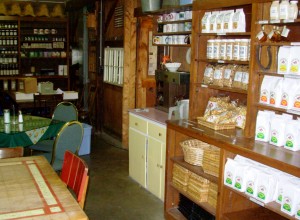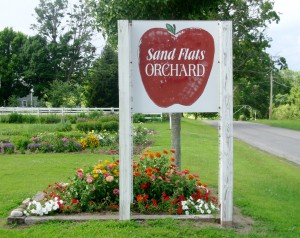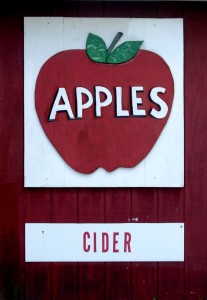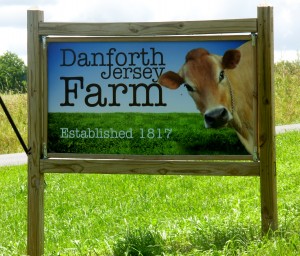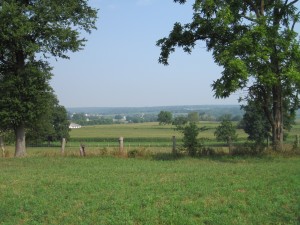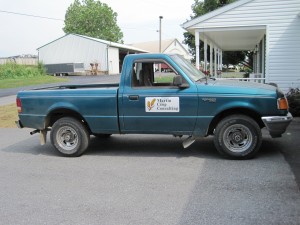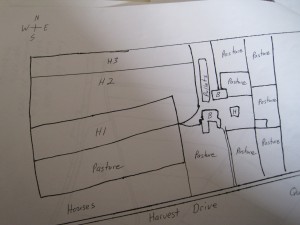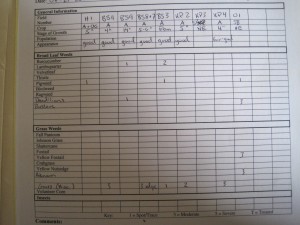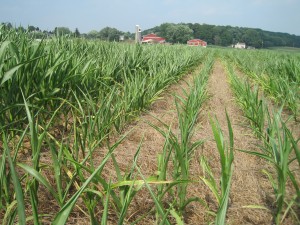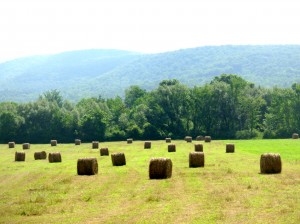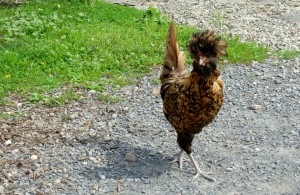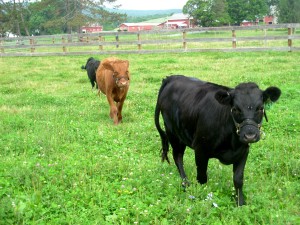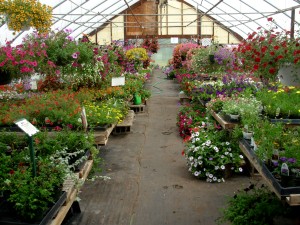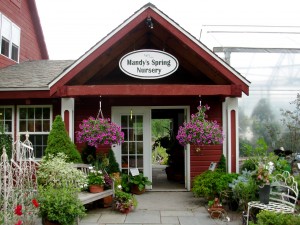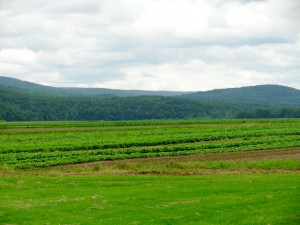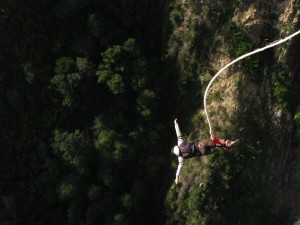In the second week, the group continued to tour the different enterprises and obtain a complete picture from production of avocados, tomatoes, and onions to selling it. We went through the packaging, transportation, and marketing. ZZ2 produces 40% of the tomatoes in SA and its impressive production is due to a vertical integration. SA does not have farm subsidies which makes it a hard environment for the production of crops in a world filled with subsidies.
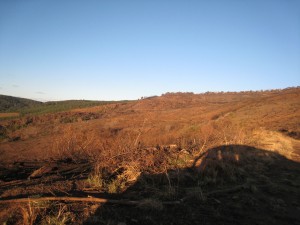
This third week has been the busiest. I have had interviews with six people surrounding the production of tomatoes of ZZ2. The nature of the interviews was to determine the level of adoption of Natuurboerdery practices on the farm and how those changes came to be.
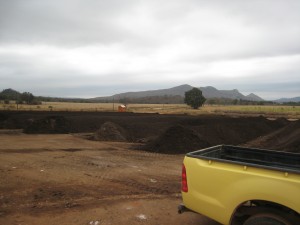
In the end I will prepare a presentation for ZZ2 that includes the history, the channels of communication, and observations I did during the project time.
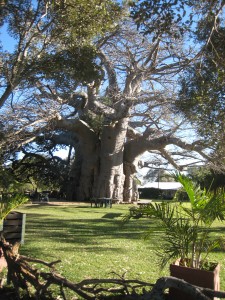
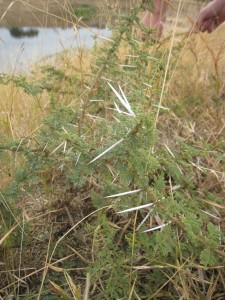
There has also being leisure time to enjoy this beautiful country. We visited a baobab said to be over 1000 years old and we moved to a game lodge where we see giraffes, zebras, buffalo, kudu, and other animals. I really recent not having a better camera with all the magnificent birds you can find here. 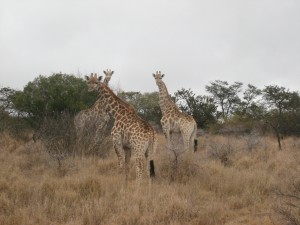
Time is passing by fast and due to the weather stress of this year our internship had to be cut to four weeks.
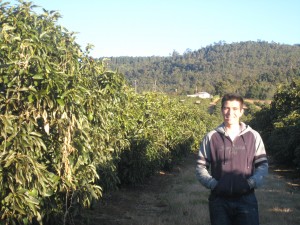
Weeks 2 and 3
Weeks Six/Seven: Homemade Butter, Pickles and Jam, Oh My!
Week Six was wonderful, and I had another exciting week of farm visits. I was mostly in Schoharie County and it is one of the most gorgeous places I have driven though. I have included highlights from my visits this week.
I visited Buck Hill Farm in Schoharie County which was such a lovely place. They have a whole farm store and a dining area where they have breakfasts a few times a week. The store was stocked full of homemade goods, jams, candies, pickles, and of course Maple Syrup. I had a really wonderful visit there and I highly recommend the Raspberry Jam. I wish that I had more time to chat with some of the farmers. It was really a wonderful visit and I feel like I totally could have stayed for hours.
This week I also visited Sand Flats Orchard and had a really wonderful time doing my interview there. They have a beautiful operation, and two very sweet dogs who greeted me happily. It made me very excited for the apple season in the fall and I can just smell the cider doughnuts and cider already!
I also visited Cowbella Fine Farmstead Dairy which is also Danforth Jersey Farm. They have gorgeous Jersey’s there and the little ones were so cute! I got to meet most of the family, and see them making butter and packaging it. It is seriously the best butter I have ever had. It is very similar to Irish butter that I remember having at my family’s houses in Ireland. So rich and delicious! They sent me home with some of the fresh batch of butter and even a whole quart of their homemade yogurt! They also have a wonderful logo.
My seventh week of work was not the best. I was in a car accident (I am totally fine) and now I am figuring out how to work without a car. I am back on track and trying to get as much as I can done from home. I have transitioned to doing phone interviews, and I am still making good headway. I made it to 50 surveys which feels like a great accomplishment. There are a lot of people who have also done the online version of the survey on Survey Monkey which adds more to my total number! I am still hoping to get 100 by the end of the internship, so wish me good luck!
Catching Up
I have a bit of back tracking to do in this first post. I have been working for a crop consultant in Lancaster county, PA since summer started. My first month or so working/interning was rather repetitious but rewarding. The first challenge I ran into was working around Cornell’s late spring schedule. Fortunately, Lancaster had a rather late spring this year due to all the rain but I still went home during study week which gave me a chance to get some preliminary training before planting season was in full swing. Once I was home for the summer my boss and I traveled around to farms together for the first week and then he sent me out on my own. May and June are pretty crazy months for crop consultants as all the corn (hopefully) is being planted and needs to be checked for weeds and overall health at least twice before it reaches 4 feet in height.
Essentially, this first month consisted of me working 12 hour days, driving around Lancaster county in my little Ford Ranger and walking through corn fields. During my week of training my boss showed me how to take corn populations and quizzed me on the different types of weeds and bugs/worms we were seeing in the fields. Taking corn populations is quite simple and I enjoyed learning to identify weeds. I’ve had to memorize about 15-20 common weed species, this includes both broad leaf weeds and grasses. The most challenging part of this was learning to differentiate between weeds in the seedling stage but after about a week on my own I felt pretty comfortable with the material.
I’ll give a quick overview of what an average day my first month looked like. My boss gave me several farm files each containing a map of all the fields farmed by a particular farmer and what was planted in those fields the past four years. I would then go to each corn field and walk through it in a sort of zig zag pattern. My main responsibility was to identify what weeds and/or bugs were present and how severe they were. I also observed the corn for any abnormalities but my boss usually double checked the quality of the corn. I then gave what I found to my boss and he wrote up a recommendation (usually pesticide recommendations) for the farmer.
The job can be a bit monotonous at times but there have been a few interesting cases that involved some agronomic forensics. For example, one of the farms I was at had 3 corn fields with some unusually purple colored corn in spots. I had seen purple tinted corn at other farms and was told that the coloration was due to stress and the variety of corn planted but this corn was a deeper purple than I had seen before. I let my boss know and he agreed that it didn’t look normal and some time later this corn was completely dead. It turned out that the business beside this farm had sprayed their gravel parking lot with a mixture designed to kill plants. Unfortunately, it rained shortly after the parking lot was sprayed and this mixture was washed into the cornfields, killing all the corn it came into contact with.
Things have calmed down a bit now that the corn has gotten too tall to apply pesticides. We’re now focusing more on alfalfa and soybeans but I’ll cover that in the next post.
Buckwheat, broccoli, and tomatoes.. Oh my!
I’m learning just how hard it is to do agricultural work for ten hours on a regular basis. Recently it’s been over 100 degrees Fahrenheit where I work! It’s tough because by the time that I get there, it’s already 8:30, when the heat has already climbed to about 90 degrees. I’m learning to deal with heat without complaining, which is pretty hard. I have mad respect for farmers that are out in it all day long! It gets tough when you need to drive a tractor with a black leather seat and the engine generates a bunch of heat. But that’s ok! Because we’re tough!
Lately, I’ve been working on a big poster for my summer scholar’s program, which looks a little something like this:
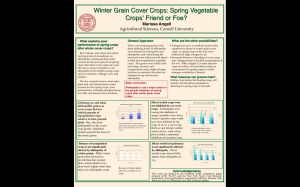
This is essentially what I’ve been talking about for the past few weeks. What we’ve found with the research is pretty interesting; basically, using rye as a cover crop doesn’t diminish spring crop performance because of allelopathy, but for other reasons. We’re not sure yet, but are working on it! My boss thinks it’s changes in soil microflora, but we won’t know until we run a few more trials. Anyway..
It was so hot Thursday afternoon that working out in the fields would have been a really bad idea. So instead, my supervisor and Thomas decided to take us out on a wonderful road trip to view a bunch of different farms around the Seneca/Geneva area. It was really informational! And Liz and I got a lot of neat pictures.
Most of Geneva’s agriculture relies on the typical corn, soybeans, and, less typically, cabbage. We saw acres upon acres of cabbage! Here’s my cabbage friend: 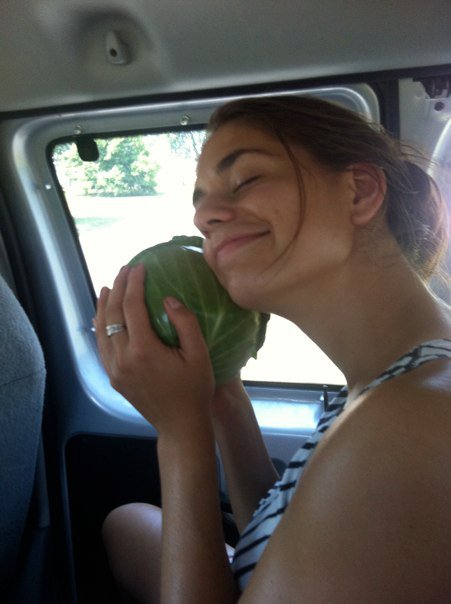
Interestingly, a lot of the fields around Geneva use Roundup Ready corn and soy, which I wouldn’t have predicted. You can tell because the weeds that should be around the plants look very brown and crispy.
As many of you might know, the Seneca area/Finger lakes region is also great wine country! We have really fertile soil for growing grapes and other fun alcohol making materials. Thomas’s wife actually owns Wagner’s, a great winery near Seneca lake! I highly recommend it. They play music weekly. Check it out!
Research is wrapping up for me, only two weeks left! I’ll post more as more interesting things come up 🙂
Week 1
During the first week of the internship, the Cornell group went around the different divisions of ZZ2 and were able to appreciate the size of the operation. This week was very busy!
The cattle division, shown to us by Albert Noffke, holds an impressive amount of breeding bulls and cows that include pinzgauer, santa gertrudis, Nguni, and their own breed: pinzyl. I have also had the pleasure to see and talk about their onion, avocado and tomato production. ZZ2 is known for their tomato production and are the largest tomato growers in Africa. The visited pack houses, greenhouses, and will go to netting houses later. We have also been allowed in their everyday meetings.
With this information, we are to revise our projects and amend them since we now have a higher grasp of the company. Next week we will start our projects.
My project in particular deals with the history of transition from chemical agriculture to an integrated farming approach of chemical and natural farming coined Natuurboerdery.
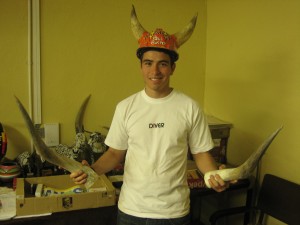
Week Five: 4,000 Miles Down, 30 Surveys Done and 5 Weeks to Go
My task for the rest of this internship this summer is to get as many surveys done as possible, ideally around 150. It is really nice to just have one main thing to focus on and just do it! So far I have gotten 30 surveys done, and it feels like a great accomplishment! Though it has been a ton of driving (over 4,000 miles so far) I am getting to see so many new places in NY state, and I get to listen to Harry Potter on tape which helps the driving time go by. Despite all the driving, it has been really wonderful to meet so many farmers, I think talking to people has been my favorite part so far, besides seeing so many diverse farms. I have had some very interesting and exciting conversations with people about the weather, about having more people grow their own food, about soil science, and more. I talked with a farmer about the idea of a farm family for a while, they felt that it was important to look not only at the owners, but the whole farm family. The idea that the owners and their family, all the workers, and consultants, and everyone involved in the operation was a part of a big family. This farm is trying to support the local population and provide them an opportunity to participate in agriculture. It has also been neat to hear about how people started farming, how they got involved, or just how long some farms have been in the family for!

This Orchard had a fabulous farm store, with delicious baked goods (I highly reccomend the sugar cookies with raspberry in the middle) and they even had a small ice cream shop!
I have gotten to see orchards, beef operations, a Christmas tree farm, a maple syrup operation, greenhouses and nurseries, dairy farms, vegetable and fruit farms, of all different sizes! I am trying to focus week by week on a few different Counties, so I have blocked out times to be in each area. So I once I block out a few days in one county, then a few days in another for the week, I then go ahead and try to fill in each day with interviews. I have found that calling a week in advance is too far ahead, and calling a day before is too late, 2-3 days before seems to be best so people can try to anticipate their schedules. This week I got to see a small grass-fed beef farm, with gorgeous red barns and very happy looking animals. They also had some pretty awesome chickens.
The most challenging part of this internship so far has been setting up the interviews. I am calling people during the busiest time of year, so its key to get right to the point and be respectfully persistent. A few people have been very much against doing the survey, and they were appalled that we were even trying to do something like this during the summer. This is certainly the worst time to be asking farmers to do a survey, but it is what it is, and I gotta keep on trying! Some people have been very happy to participate, and about three people even opened up the letter and filled out the survey on their own! Generally, most people are so busy, that they have not gotten to glance at the letters we sent out, but with some persuasion, most people are happy to set up an interview. I have certainly learned good phone etiquette during this past week; making cold calls is hard! It is important to introduce yourself, explain very briefly what you are doing and the purpose, enough so they know whats up. The key is not taking up too much of their time, and then politely asking if they have about thirty minutes free on so and so days when I will be in so and so county to go through the survey. I learned the hard way no to schedule the interviews too close to each other. First there is just the variety in the amount of time it takes to go through the survey, then the time just chatting, then there is the distance from farm to farm I have to think about, plus because it is summer there is a lot of construction with unexpected delays. It seems that so far the right amount of interviews is 4 or 5 per day.
Learning Theory and Organizational Methods: College vs Cubicle
50 minutes on, 10 off.
This is classic learning theory. Most human brains can tolerate two or three repetitions of 50 minutes of focused, active learning followed by 10 minutes of walking around, push ups, checking email, or getting water. I like to track my learning at school with toggl. I have experimented with many internet activity tracking tools, but toggl seems to work the best. I like that I can press the start button and see the clock begin. Toggl also provides utility in the work place. I have a dual screen setup, so the timer one one screen reminds me that I am clocked in and need to work on one project at a time. Nonetheless, I have retired to 50 on, 10 off cycle for cubicle life. After my first few weeks as an intern at Organic Valley, I realize that distractions, new projects, and unexpected tasks prevent even 30 minutes of uninterrupted work.
Daily Schedule/To Remember Schedule Method.
It’s hard to find a rhythm in college, so one needs organizational tools that complement a mutable lifestyle. Cal Newport’s method is the one that I have found to be the most suitable. It requires that you define a rough schedule in the morning for about ten minutes. On the left side of an 8 1/5 x 11 or any scrap piece of paper you write, “Schedule” and on the right, “To Remember.” I like to record mine in a moleskin. You follow the schedule during the day and capture any to-dos in the “To Remember” column. The next morning, you add whatever you didn’t complete from the previous and the new to-dos to the “schedule.” Rinse and repeat. This works well in the office. It prevents the scattering of forces that often happens when emails come in and one starts working on five things at once. When the mental multitasking urges begin to simmer, one can refer to the “Schedule” and get back on track. The main difference between college and work is that to-dos or problem sets are called “action items.” I think this is funny for some reason. Probably because action seems to be the last thing anyone is doing in an office. I like this method and will continue to utilize it.
Memory Palace
This is a method of memorizing information that provides little utility in the office. There are no exams, so there is little need to memorize things. The memory palace theory of learning is one of the earliest methods of memorization, used before things were compulsively recorded in ink. It involves first visualizing a familiar spacial location and a path within the location. It could be a palace, or a childhood home, or a familiar street. If you want to remember a grocery list, for example, you begin in the first place, hence the expression “in the the first place” and you imagine the item in a crazy, lewd, outlandish situation. Suppose the first item is socks. You create in your mind’s eye a pile of socks the size of a car, the rotting smell of clothes taken from a gym locker you’re cleaning out after two months, and even some of the socks are crawling around, like maggots. That’s an image you probably won’t forget. The whole point is to take the banal and turn it into a memorable image. Anyway, the time this is useful in the office place is when you need to memorize a speech, otherwise it’s useless.
Fun Times on the Farm!
Hello all,
Time is going by quickly in my internship at Geneva. We’re starting to gain speed on a lot of projects relating to mustard, pumpkins, cucumbers, broccoli, buckwheat, and cover crops.
Isn’t buckwheat pretty? No wonder Thomas likes it so much!

Recently, we’ve been taking a panoply of different measurements and getting exposed to different tasks without the help of our supervisor. One of the more interesting devices that Liz and I have gotten to use is a penetrometer- an device (sort of shaped like a T) that measures density of the soil that you are growing plants on. In order to use it, one has to insert the penetrometer into the soil and note a reading that appears on a dial at the top. The trick with the penetrometer is to not take all of the measurements by yourself! It seems fun at first, and the fun doesn’t diminish as you crazily stab the metal instrument into the ground, but it sure gets tiring. So it makes sense to trade off with a partner so your penetrometer doesn’t take the brunt of the damage.
What we’re starting to see so far with the penetrometer readings is that areas where a cover crop has been grown tend to be a little bit more aggregated due to root structures of the cover crop (like our dear old buckwheat). Soil is a pretty interesting indication of how healthy your plants are going to turn out–if there is a hardpan, i.e. a really bad crust from poor soil management, your crops aren’t going to turn out so well. What Thomas Bjorkman is researching is the impact of these cover crops on a variety of soil health issues.
Last week, Liz and I actually got to hop on the tractor and plant Bolo pumpkins for a study involving the impact of allelopathic mustards on pumpkin plants. It was pretty exciting, not going to lie, to drive a tractor super slow down half a length of a small field. You feel pretty powerful sitting up there being in command of a machine with a lot of horsepower! There are a lot of safety aspects to remember though. Perhaps the most important thing we learned was to keep our hands away from any moving equipment, chains, and gears (duh) and to push in the clutch at the first sign of any emergency. We’re pros now!
Last, today was an interesting study in both resourcefulness and amazing agricultural technology. In setting up drip irrigation for a plot of broccoli (which our boss insisted must be kept both immaculate and gorgeous), we learned about how important gravity is in making any system with water work properly. Also, keep kinks out of any hoses! Our broccoli was happy once our irrigation system was both properly lined up and kink-free.
For bigger fields, we utilized a much more complex tool. Our supervisor, Joe, hitched a large traveling irrigation cart to our van, drove it out to the field, and then left it in the middle of the field. The head of the apparatus, which looks like a common sprinkler, jettisons about 300 or so gallons of water per minute (or something like that, I think I was a little lost in the details) to a buckwheat patch. The head is on a rolling cart on wheels, which is attached to a water hose, which lies down the length of the field and is wound around a huge spool of sorts. As the field gets watered, the spool retracts hose into itself, pulling the cart with the sprinkler down the length of the field. It’s pretty cool! I’ll attach a picture so that my confusing definition doesn’t get more confusing. 
Well folks, that’s all for today! Liz and I barely made it alive out of a large thunderstorm, so I’m counting my lucky stars I’m able to blog to you about our busy days in Geneva. More posts coming soon!
Week Four: From Barbers to Bohringers and Back to the Berkshires
This weekend there was a music festival in my hometown of North Adams, MA and there just so happened to be an Organic Valley tent there! They were giving out free cheese and had demonstrations and tastings of homemade butter, plus temporary tattoos! It was very exciting, and the people working there happened to know my fellow blogger and friend Casey Knapp!
This week I finalized the online version of the survey, so that now it is available for people to complete that way. I have also started calling farmers and setting up interviews. It has been hard to figure out exactly the best way to get participants because this is not the best time to be surveying in the busiest time of year. I have found that I have to be right to the point and be very friendly. I was able to set up a good amount of farm visits for the week, and it has been such an adventure traveling around and seeing so many different places.
I even got to meet an Amish farmer who showed me around his farm and did the survey.
I think my favorite farm visit was to Barber’s Farm, and I ended up staying there for quite some time! I meet with Cindi Barber who showed me the farm from up on top of a hill, gave me a delicious cupcake, brought me down to the greenhouses, over the farm store, and all around the fields.
Overall, I completed 14 surveys this week, and bought some delicious produce along the way as I met with many awesome farmers in Schoharie county. We shall see how these next few weeks go, I hope I can get a good amount of surveys done!
First day South Africa
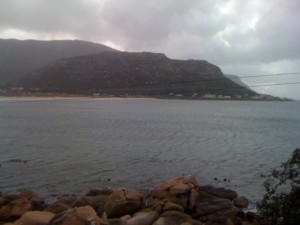 Hello my name is Julio Pachon, I am a sophomore in Agsci and Plant Sci. I have an internship with ZZ2 which is a large tomato grower with headquarters in Limpopo, South Africa. Dr. Janice Thies, Masters student Christian Pulver, and two other undergraduate students (Jacob Benedict and Peter Narby) are also part of this internship with different roles.
Hello my name is Julio Pachon, I am a sophomore in Agsci and Plant Sci. I have an internship with ZZ2 which is a large tomato grower with headquarters in Limpopo, South Africa. Dr. Janice Thies, Masters student Christian Pulver, and two other undergraduate students (Jacob Benedict and Peter Narby) are also part of this internship with different roles.
Although I am trying to be flexible to as what I expect to be the outcome of my work here, my internship is divided in two; biochar research alongside Dr. Thies and Christian Pulver, and analyzing outreach project from the grassroots.
Since this is my first day, we are currently getting to know the area and the people with which we will be working with. I am more concerned with writing on things I have learned on an internship abroad. Because of reasons out of my control Jacob and I ended up arriving two weeks prior to the start of our internship, and we decided to go backpacking in South Africa. This has been a great decision that has lead us to meet many people, see many places, and experience many things.
On our first day Jacob and I took a 31 hour train ride from Johannesburg to Cape Town. The changing landscape of this enormous country and the conversation with other travelers made this long trip enjoyable and very amusing. At Cape Town we did cage diving with Great White Sharks and we went to a site nearby, Simon’s Town, to see penguins. Because of our short time, we had limited areas to visit and next visited Storm’s River where we jumped off the highest bungee bridge. Then we stayed in Port Elizabeth where things got calmer, then to Coffee Bay where we surfed and hiked. Finally, returned to Johannesburg via Durban to meet the rest of the group and travel to our internship location.
These incomplete and rough descriptions of the successions that have happened to this point are unequivocally an inadequate way to portray all the positive and educational things I have experienced. I write this first post with the intention of proposing to all those who go abroad to do an internship to spend some time traveling and backpacking around the country.

